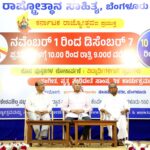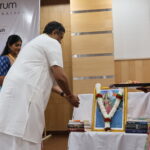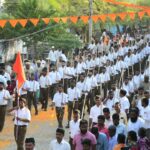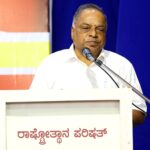
Dr Suryanath Kamath, Historian Bangalore
by Dr Suryanath Kamath, Historian, Bangalore

India has over 14,000 monuments that need to be conserved for their aesthetic or historic value. In fact, there are many more buildings and places of significance that need to be saved.
We cannot expect the government to do this alone. The Archaeological department might fail sometimes in doing all that it needs to conserve our heritage structures. Conservation of heritage requires a movement and the movement has to be started by the people.
The heritage is ours – the people’s not the government’s. We are the inheritors and it is our duty to conserve it and pass it on to generations. If we shout, if we agitate, the government will have to take up the work. We must force it. In order to achieve this, we, the people must understand the importance of our heritage and its conservation. Local people’s awareness is of utmost importance.
When I was president of the Karnataka Ithihaasa Academy, we started organising Heritage Week starting from August 16 every year. The event highlights the need to save historical monuments. We print posters and pamphlets and distribute them. In the last 24 years that the academy has been organising the event, we have seen quite some awakening among the people.
There have been several encouraging instances of local initiatives across Karnataka. People write to tahsildars in their area, inform the Archaeology department, get scholars to examine, write to the media houses to spread the word on monuments in their area.
A school teacher in Nagamangala spent `800 on petitions and finally got work worth `40 lakh done on Kambadahalli Basadi near Shravanabelagola. The 1200-year-old structure of Ganga period had crumbled. The archaeology department has now fixed it.
The principal of Mangalore Junior College held an NSS camp and got a Jain basadi at Ullal, which was hidden due to growth of trees around, cleared. The basadi – a huge compound of 80×120 sq ft – is now in service. The entrance to the old fort in Dharwad was cleared by a professor and his students. Madikeri fort was cleaned by an NSS camp, followed by minor repairs by the archaeology department. Similar works have been taken up at Hampi, Chitradurga, Uchangi and many other places. The UGC also arranges funds for universities to get students involved in cleaning monuments. This develops an understanding of monuments and the history in the youth.
I must highlight another point. At Ugar Khurd in Belgaum, two Chalukyan temples were renovated by the locals. RCC pillars replaced the old beautiful pillars of Chalukya style that people threw away. People are negligent about the significance of things of historical and artistic value. They need advise. They cannot be entrusted with conservation on their own. The archaeology department should instruct people.
To start with, people need to know what is important, what is heritage and what to conserve. Any monument which is 100 years old should be preserved like old forts, old temples, dargahs, mosques and their ruins, inscriptions in stones, copper plates, coins, palm leaf manuscripts, paper documents etc.
Apart from forming heritage clubs at schools and colleges, panchayats or local municipal bodies should develop the monuments and make them tourist centres. The fees collected from visitors should be spent on preserving the structure.
Lastly, I want to raise a question. The Muzrai department’s annual income is Rs 200 crore. How much do they spend on monuments?
(The writer is an eminent historian and former Chief Editor, Karnataka State Gazetteer)
http://www.deccanchronicle.com/channels/cities/bengaluru/%E2%80%98people%E2%80%99s-movement-necessary-conserve-heritage-structures%E2%80%99-625





